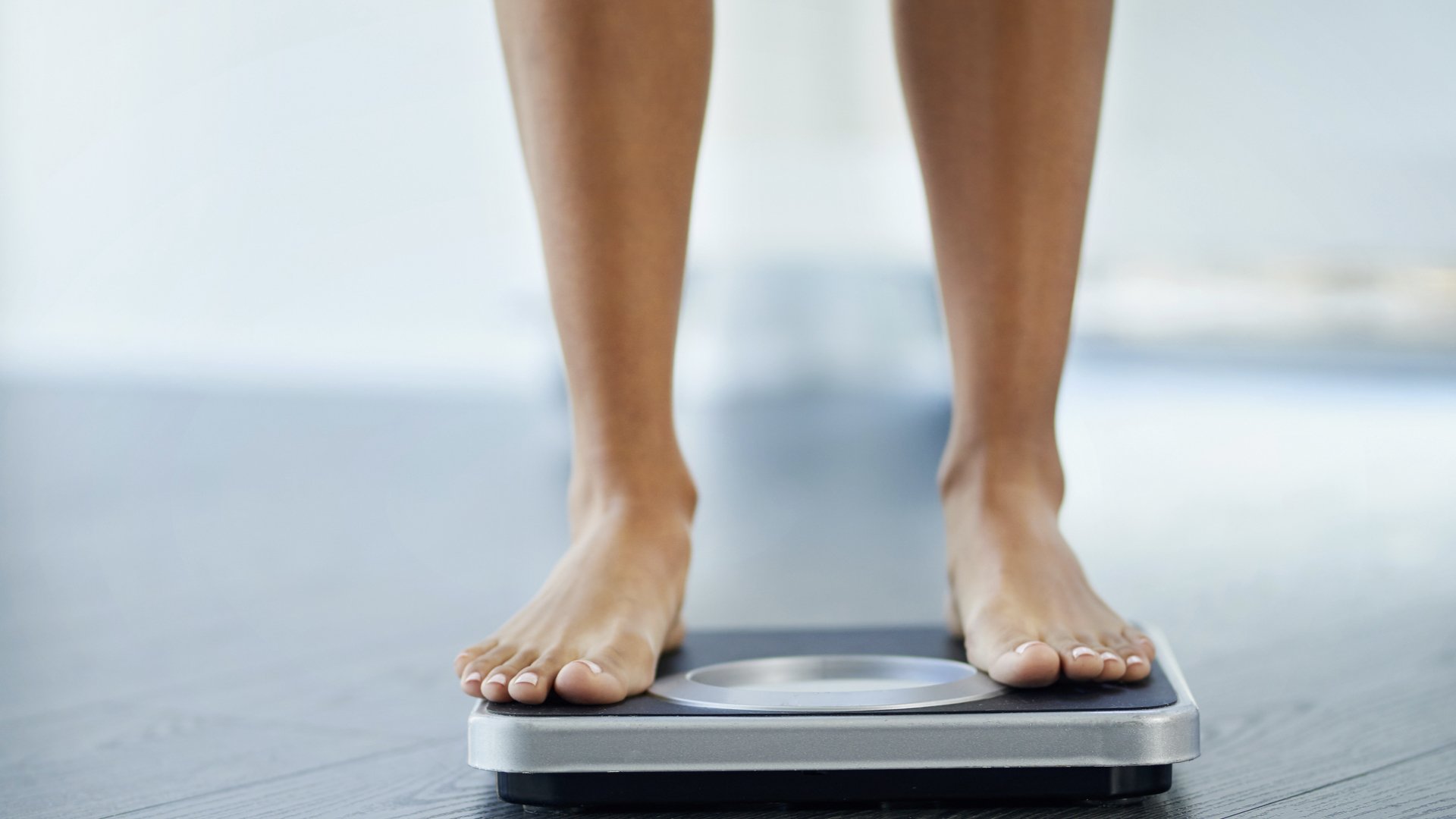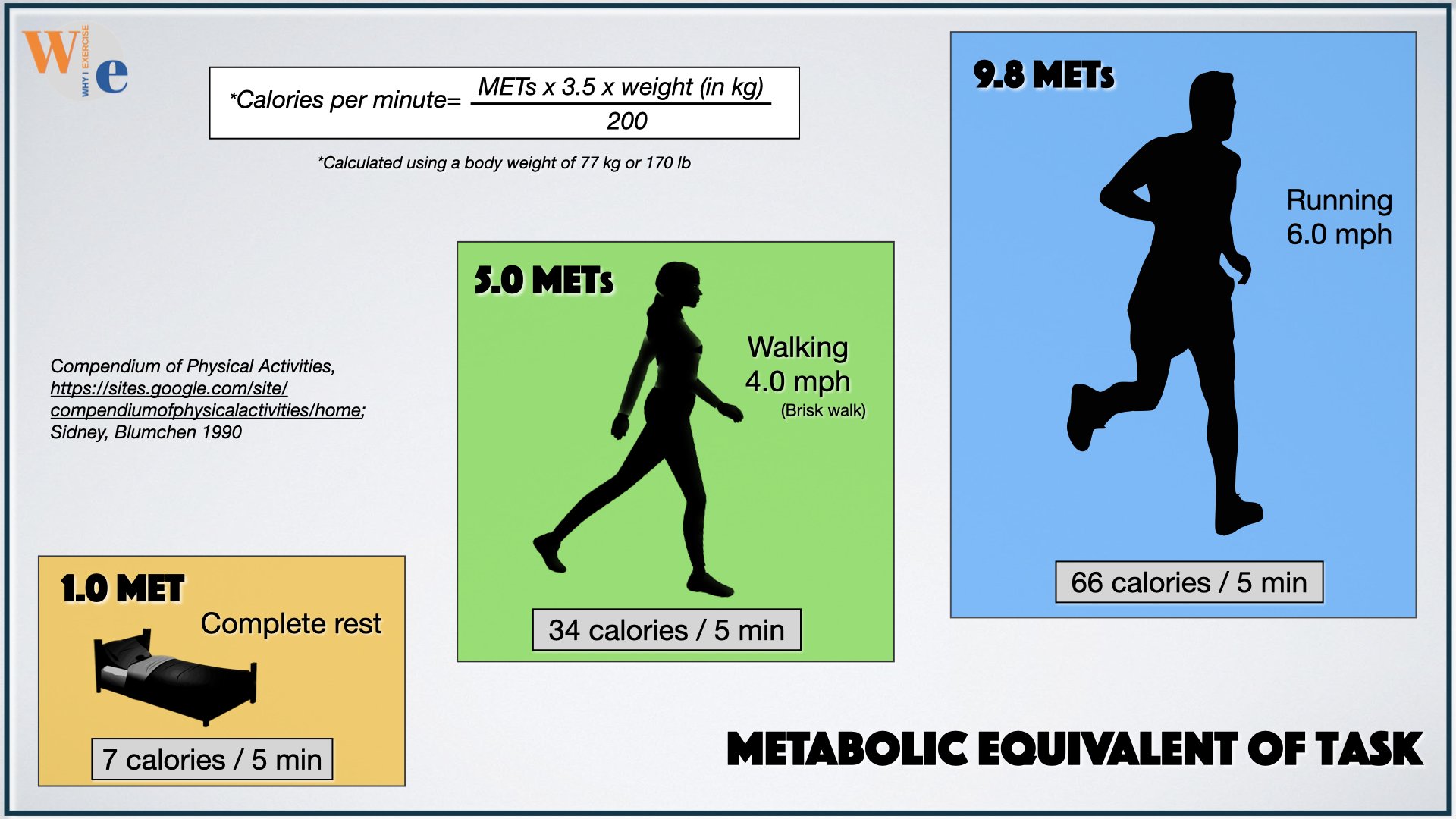
Waist Circumference
Examining the hidden dangers of abdominal obesity.

Waist circumference is a metric we acknowledge but often overlook when assessing our health and well-being. Stepping onto a scale and looking up your body mass index is a good starting point, but BMI doesn’t account for muscle mass or where body fat is distributed (Eg. abdomen vs. lower body). Scientists have discovered that a large waist circumference correlates closely to excess fat around the organs, which can significantly increase health risks such as cardiovascular disease and diabetes. For this reason, losing inches can be a great benefit, even without losing weight!
A large-scale study out of Europe found that people of the same body weight with a smaller waist have a significantly lower risk of death (1). Scientists found the risk was about 6-7% lower per inch for women and 8% for men. While the health benefits of losing inches are clear, waist circumference research offers more value when factoring in height and hip circumference.
Waist Circumference and Height: The Waist-to-Height Ratio
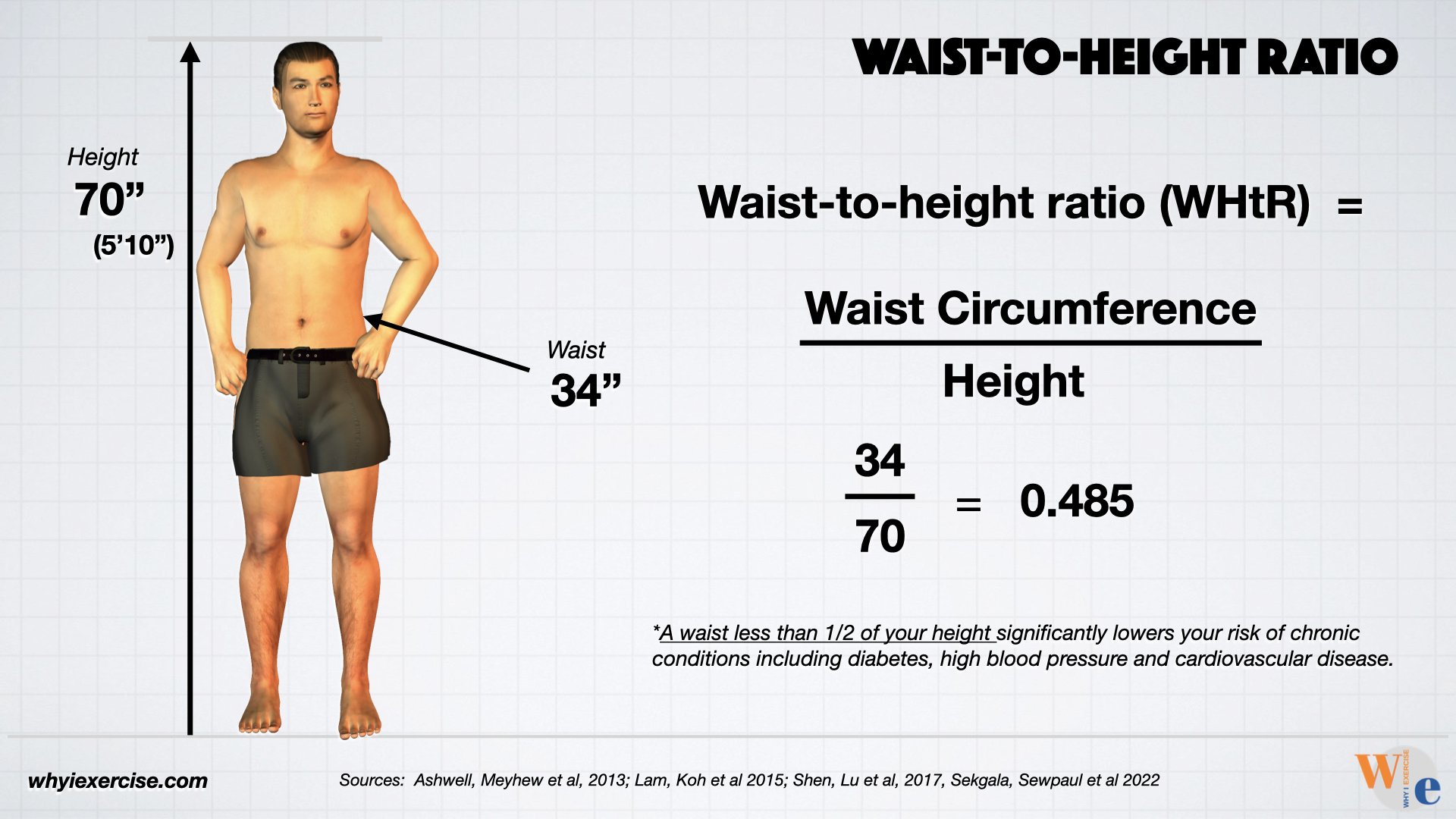
The waist-to-height ratio, found by dividing your waist by your height, impacts healthy longevity. The target is easy to remember. A waist circumference of less than half your height will lower your health risks. (2-5) Research across the globe showed elevated risks of high blood pressure, diabetes, and cardiovascular disease for people with waists more than half their height, regardless of body size or frame.
A 2014 UK study found that waist-to-height ratio may affect your life span! Find your waist circumference measurement in the left column and scan to the right for your height to see your score. Women in the study with a waist-to-height ratio above 0.57 lived one year less than peers with a lower score. Women with a waist-to-height ratio above 0.62 lost an additional year (2). According to the study, the average US woman would lose two years compared to peers with a lower score.
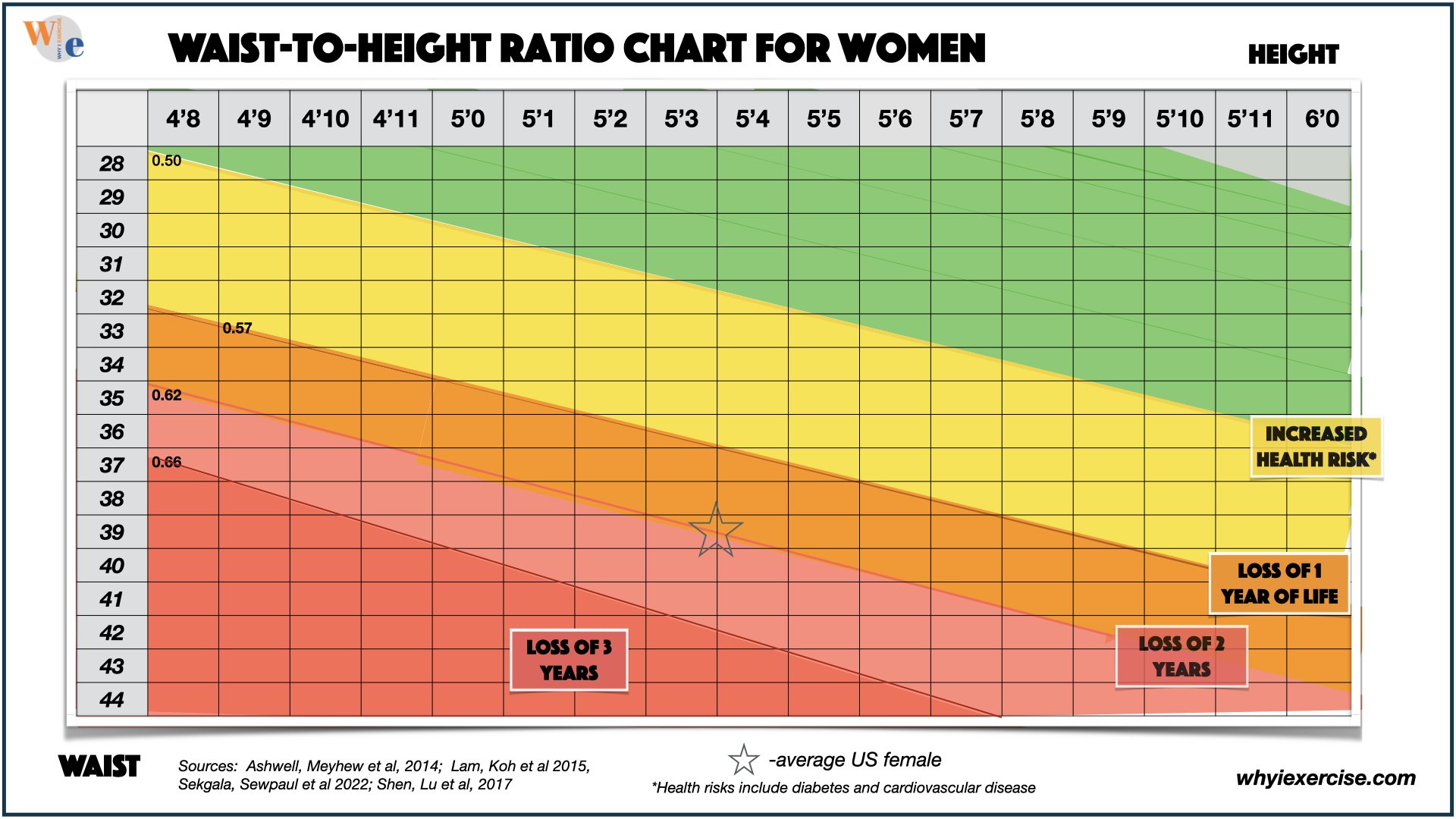
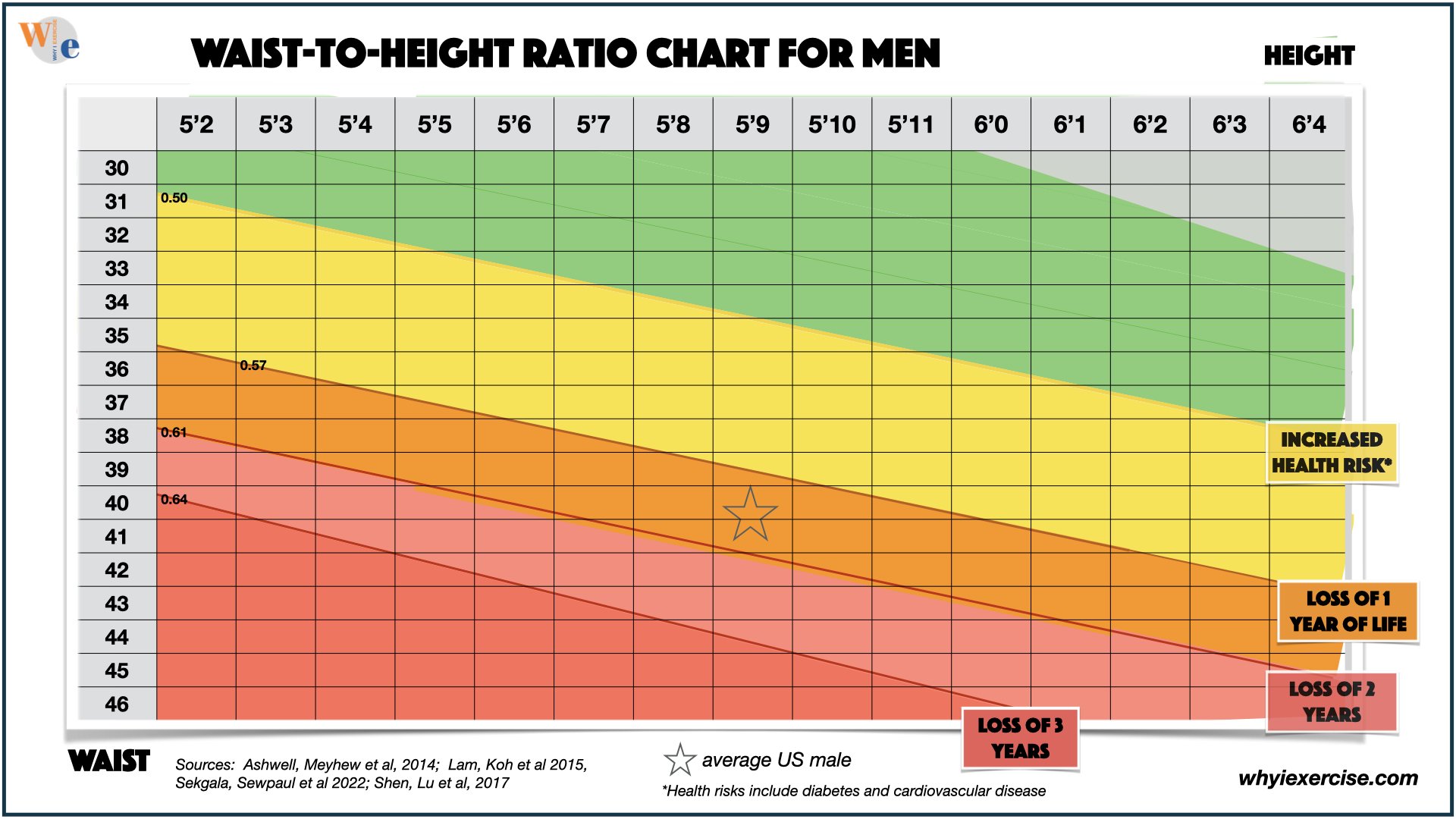
Men's data from the study showed similar results, with longevity decreasing for higher scores. Men with a waist-to-height ratio above 0.57 lived one year less than peers with a lower score. Men with a waist-to-height ratio above 0.61 lost an additional year, and men above 0.64 lived three years less than peers who were 0.56 or lower. According to the study, the average US male would lose one year compared to peers with a lower score.
Combining the data on waist circumference from the studies, we can see the advantages of losing inches for the average male, regardless of body weight. If the average man (5'9" with a 401/2 inch waist) loses 1 inch from his waist, he joins a group with a significantly lower risk of heart attack. With an additional inch he reaches the threshold to add a year of life expectancy. Four more inches, and he joins a group with significantly lower risks of chronic conditions, including diabetes, high blood pressure and cardiovascular disease.
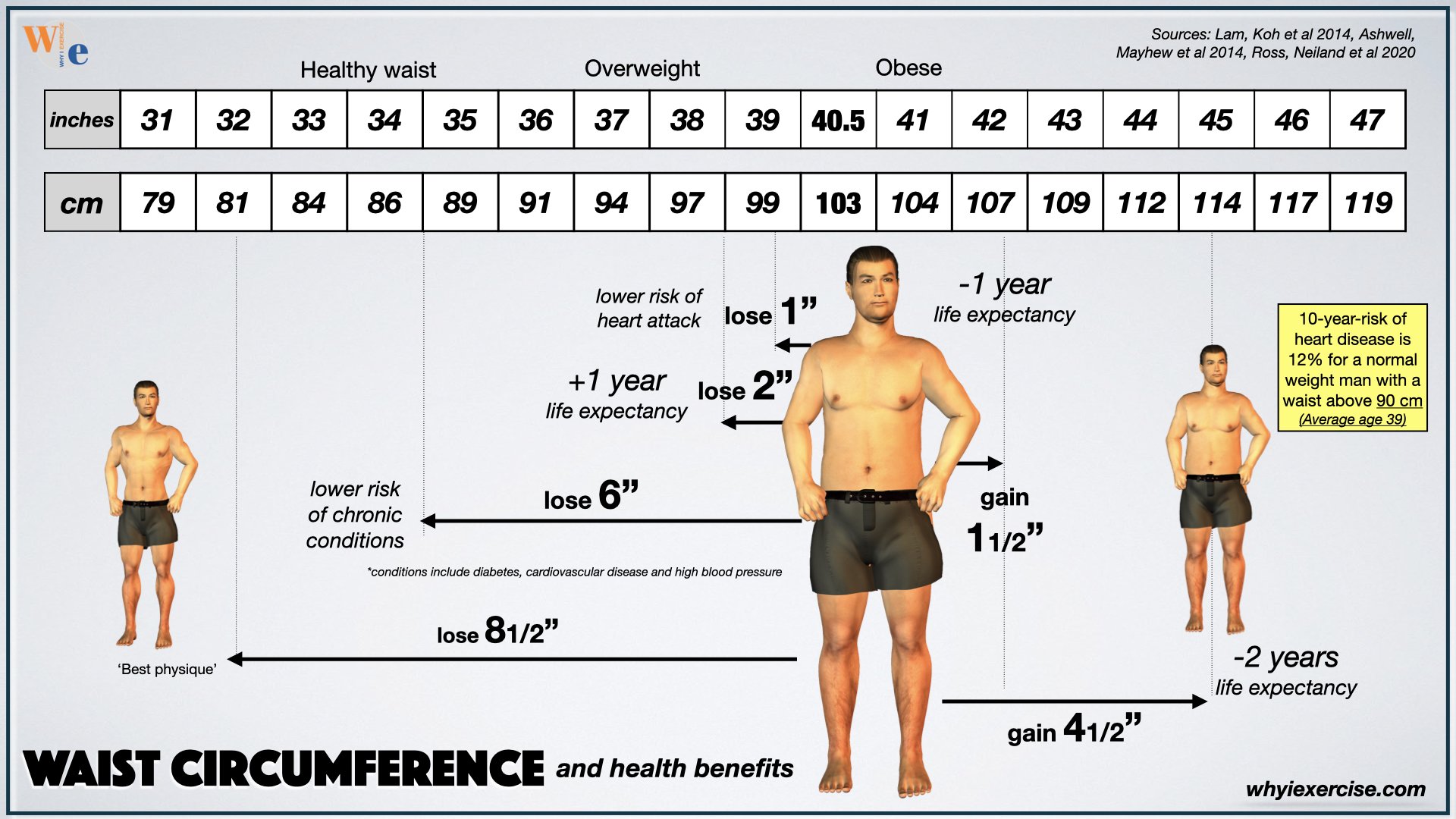
If he goes the other way and adds one and 1/2 inches to his waist, he joins a group expected to live one year less. Three additional inches take away another year. See the women's chart in this article.
Waist Circumference and Hip Circumference: The Waist-to-Hip Ratio
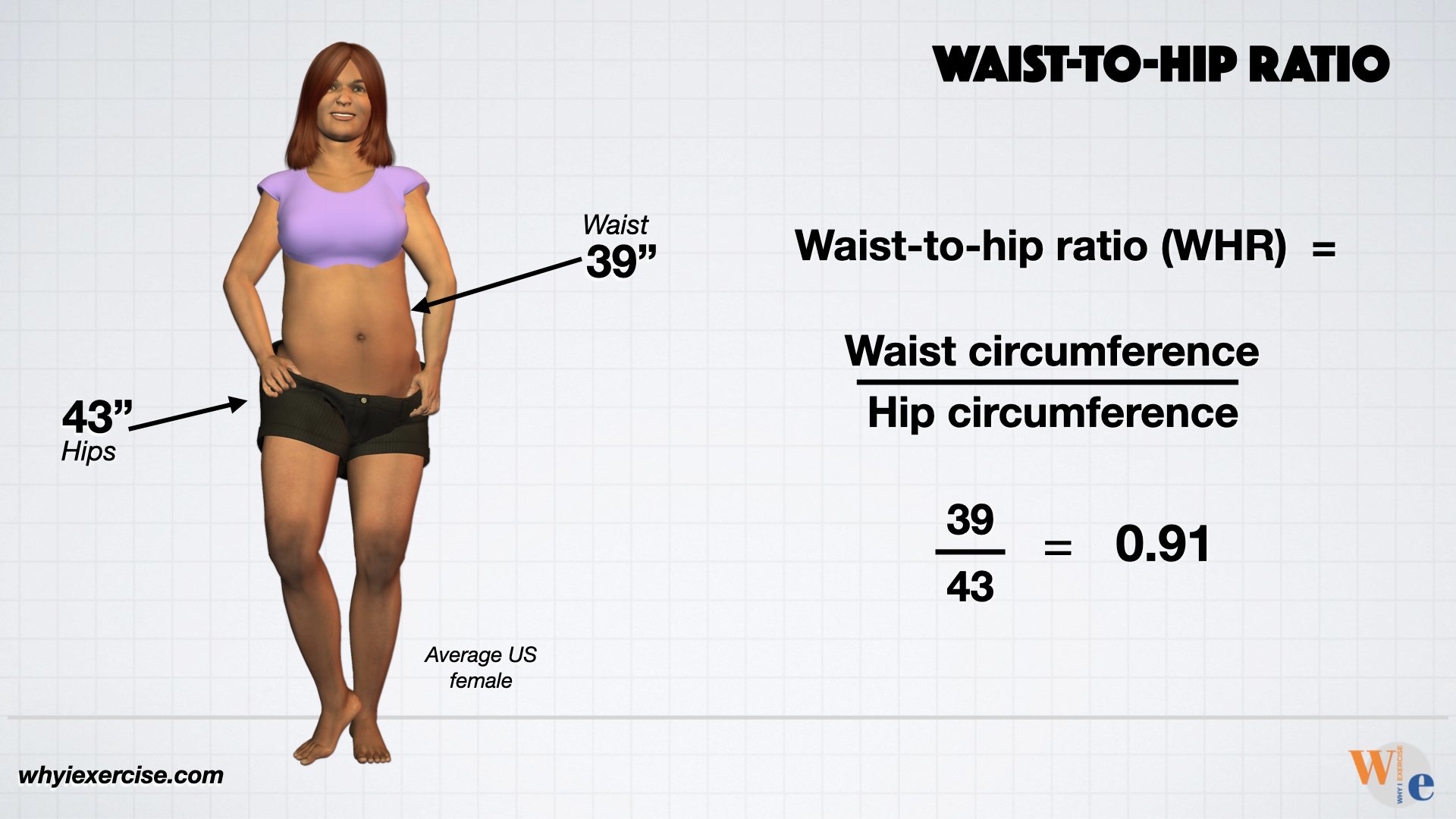
The waist-to-hip ratio, found by dividing your waist by your height, also helps to identify risk of of chronic conditions like heart disease and diabetes. When your waist circumference is nearly as large as your hips (or larger), your health risks are increased. A 2023 UK study found when compared to body mass index, an increase in waist-to-hip ratio was more strongly associated with death risk due to cardiovascular disease, cancer, or all causes combined (6).
Look up your waist-to-hip ratio (WHR) on this chart. Find your hip measurement in the left column, then scan to the right for your waist circumference. Your WHR is at the top. According to a 2018 UK study, the average US woman would have nearly two times the risk of a heart attack compared to peers with optimal measurements (7). Learn more about waist-to-hip ratio in this article.
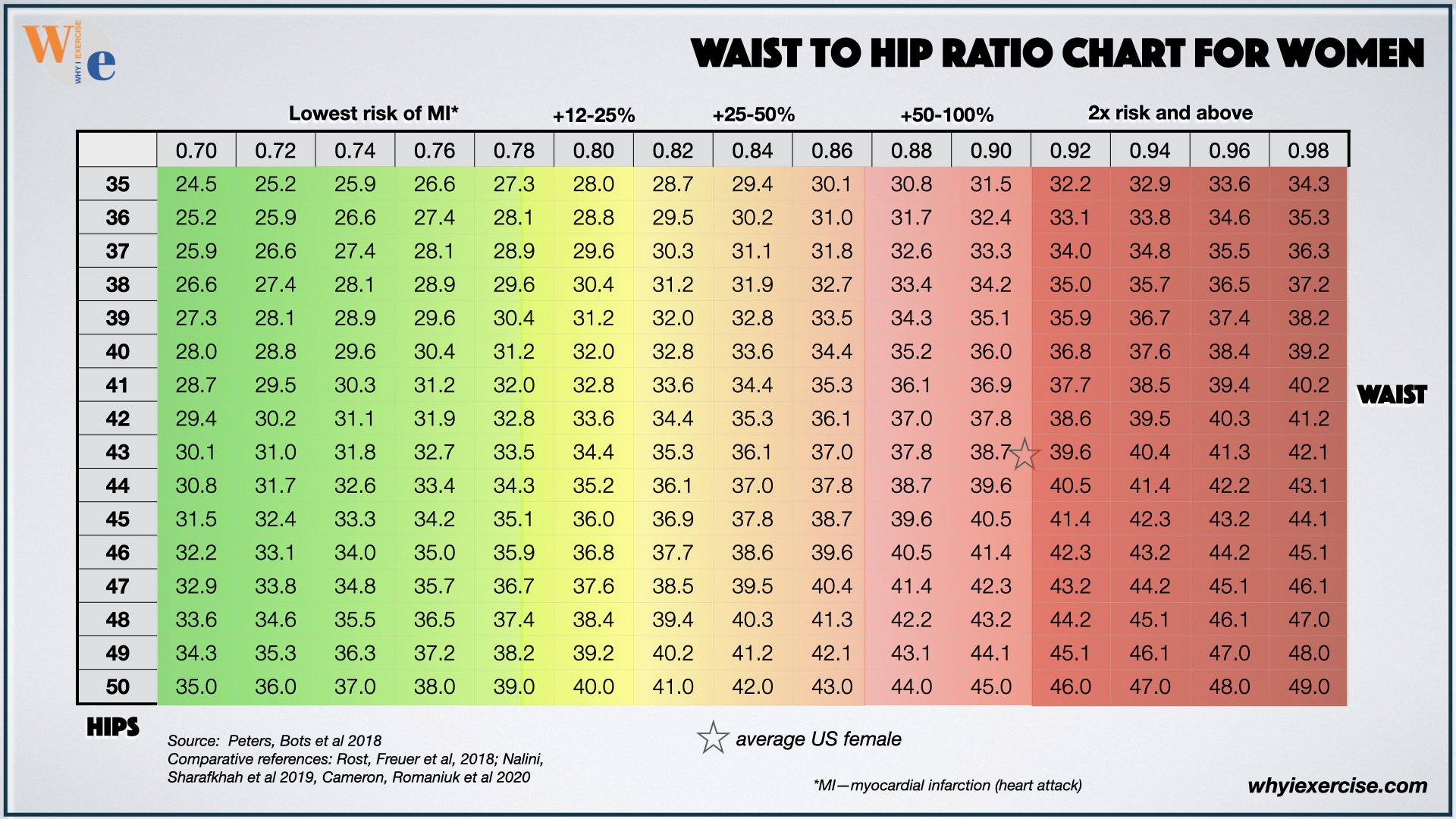
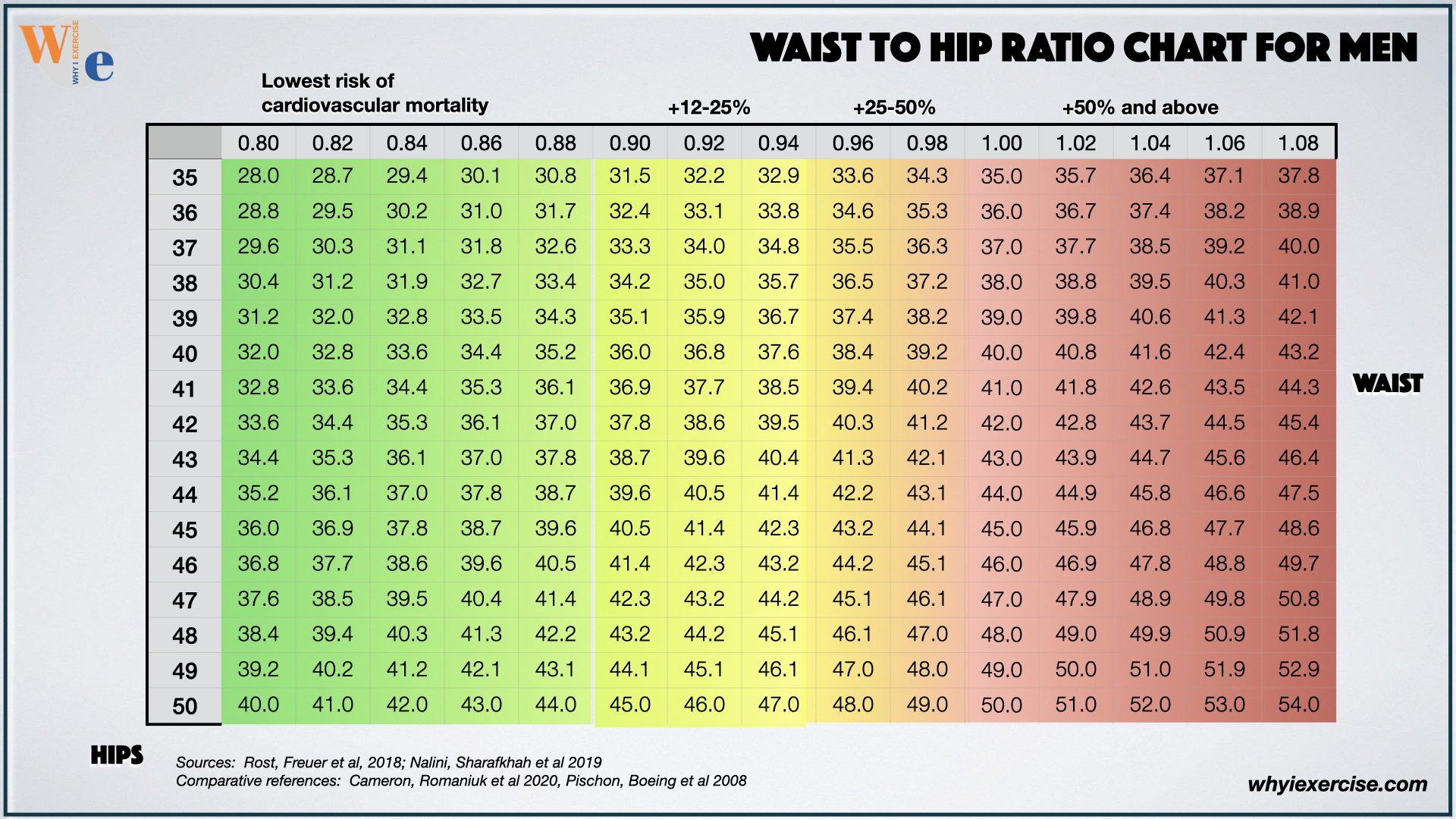
Men have similarly increased risks with a higher waist-to-hip ratio score. According to a 2019 study out of Iran, the average US male would have a 50% greater risk of death by cardiovascular disease than a peer with optimal measurements (8). Now that we know the healthy standards for our waist circumference compared to our height and hips, let's review proper measuring techniques to ensure our scoring will be accurate.
How to accurately measure your waist circumference and hip circumference
To measure your waist circumference, stand upright and maintain normal tension in your waistline. Don't try to suck your waist in or let your belly hang out. Measure yourself at the level of your navel, turning to the side to ensure the tape is horizontal (not at an angle) all the way around. The tape should fit evenly, contacting the skin around your midsection without pinching.
*This YouTube video by Why I Exercise guides you through correct waist and hip measurements step-by-step.
When you measure your hip circumference, run the tape around the widest part of your hips. This should be near the mid-buttocks. The tape should run horizontally and fit evenly, contacting the skin around your hips, or your garment, without pinching. For the most accurate results, measure yourself in no more than one thin layer of clothing. Repeat two or three times to make sure you have the correct measurement.
You may have seen other articles or videos online that call for measuring at the narrowest point of your waist. The reference data for our health standards comes from research using measurements at the navel. Take special care to avoid sucking in the upper abdominal wall for a better measurement. If this becomes a habit, it may lead to excessive tension in these muscles, which can cause back pain and dysfunctional breathing patterns.
Waist Circumference and Body Mass Index (BMI)
While waist circumference offers health insights lacking in body mass index research, BMI has the advantage of numerous studies on millions of people due to the ease of gathering body weight data. (BMI is calculated using your weight and height.) When you know you need to lose weight, you can take advantage of the studies covering BMI-based standards for a lower risk of numerous chronic conditions, including premature death, disability, chronic pain, high blood pressure, diabetes, and more. Learn more in our body mass index article.
Examining both measurements together has been helpful as well. A Canadian study observed a significant increase in the risk of heart attack by waist circumference when factoring in body mass index. Based on their data, researchers set standards for the waist by BMI. For example, women with a BMI between 25-29.9 with a waist circumference below 90 cm (35.4 inches) had a lower risk of heart attack than peers with a waist above 90 cm. Men of the same BMI had a lower risk with a waist circumference below 100 cm (39.4 inches) (9).
Setting and achieving goals based on your waist circumference
While there are no guarantees of healthy outcomes with any particular measurement, the scientific literature is consistent about the benefits of a smaller waist circumference for reducing the risk of many chronic conditions. A waist less than half your height, and a waist visibly smaller than your hips (particularly in women) are well-established thresholds for improving the likelihood of better long-term health. Based on the data, I hope you find that each step of progress toward these standards is worth the effort to reduce your health risk and improve your long-term quality of life.
Waist circumference, waist-to-hip ratio, waist-to-height ratio, and BMI comprise only one aspect of health you can measure for yourself. To avoid self-stereotyping and to maintain a balanced perspective, it may help to look at body measurements and body weight in the context of your overall health and fitness. Cardio fitness, for example, helps prevent the same conditions affected by body weight and size. When you have a good sense of where you stand as a whole, it's easier to stick with the proven and well-known practices of consistent physical activity and healthy nutrition needed to achieve and maintain your goals for a lifetime.
Related Articles from Fit For Your Life, the masterclass series.
Learning the health advantages of different sizes and weight groups can help you zero in on what you want for yourself. Take a step toward optimal health with weight goals you can commit to achieving.
Learn how to take accurate waist and hip measurements for a research-backed assessment of your body fat distribution. Compare yourself to current standards. Studies show that having a small waist compared to your hips comes with significant health benefits.
Metabolic Equivalent (MET): Pick the best exercises for longevity & calorie burn.
Fine tune your lifestyle for a longer life expectancy, using the activities you enjoy. Create effective training programs from daily life activities, senior-friendly activities, sports, leisure activities, and cardio exercise.
References
1) Pischon T, Boeing H, et al. General and abdominal adiposity and risk of death in Europe. N Engl J Med. 2008 Nov 13;359(20):2105-20. doi: 10.1056/NEJMoa0801891. Erratum in: N Engl J Med. 2010 Jun 24;362(25):2433. PMID: 19005195.
2) Ashwell M, Mayhew L, et al (2014) Waist-to-Height Ratio Is More Predictive of Years of Life Lost than Body Mass Index. PLoS ONE 9(9): e103483. https://doi.org/10.1371/journal.pone.0103483
3) Lam BC, Koh GC, et al. Comparison of Body Mass Index (BMI), Body Adiposity Index (BAI), Waist Circumference (WC), Waist-To-Hip Ratio (WHR) and Waist-To-Height Ratio (WHtR) as predictors of cardiovascular disease risk factors in an adult population in Singapore. PLoS One. 2015 Apr 16;10(4):e0122985. doi: 10.1371/journal.pone.0122985. PMID: 25880905; PMCID: PMC4400161.
4) Shen, S., Lu, Y., Qi, H. et al. Waist-to-height ratio is an effective indicator for comprehensive cardiovascular health. Sci Rep 7, 43046 (2017). https://doi.org/10.1038/srep43046
5) Sekgala MD, Sewpaul R, Opperman M, Mchiza ZJ. Comparison of the Ability of Anthropometric Indices to Predict the Risk of Diabetes Mellitus in South African Males: SANHANES-1. Int J Environ Res Public Health. 2022 Mar 9;19(6):3224. doi: 10.3390/ijerph19063224. PMID: 35328910; PMCID: PMC8949079.
6) Khan I, Chong M, Le A, et al. Surrogate Adiposity Markers and Mortality. JAMA Netw Open.2023;6(9):e2334836. doi:10.1001/jamanetworkopen.2023.34836
7) Peters SAE, Bots SH, Woodward M. Sex Differences in the Association Between Measures of General and Central Adiposity and the Risk of Myocardial Infarction: Results From the UK Biobank. J Am Heart Assoc. 2018 Feb 28;7(5):e008507. doi: 10.1161/JAHA.117.008507. PMID: 29490971; PMCID: PMC5866342.
8) Nalini M, Sharafkhah M, et al. Comparing Anthropometric Indicators of Visceral and General Adiposity as Determinants of Overall and Cardiovascular Mortality. Arch Iran Med. 2019 Jun 1;22(6):301-309. PMID: 31356096; PMCID: PMC8843234.
9) Ardern CI, Janssen I, Ross R, Katzmarzyk PT. Development of health-related waist circumference thresholds within BMI categories. Obes Res. 2004 Jul;12(7):1094-103. doi: 10.1038/oby.2004.137. PMID: 15292473.
